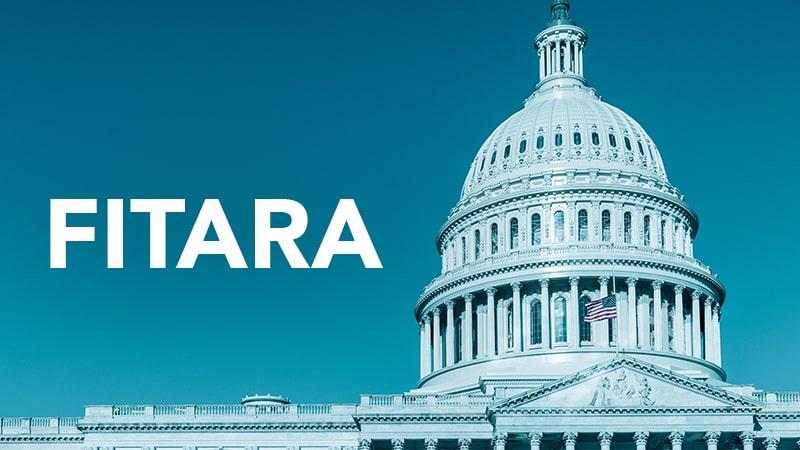
IT-related gradings for the largest Federal government agencies moved moderately higher on the 15th edition of the FITARA Scorecard issued today by the House Oversight and Reform Committee.
In total, seven agencies saw their grades improve enough to lift scores to the next highest letter grade. The remaining 17 agencies received either the same – or close to the same – grade as they did on the previous scorecard, with fluctuations of less than one full letter grade, and remaining in the same letter grade category.
The committee’s semi-annual scorecard grades the 24 Federal CFO Act agencies for their performance in several IT-related categories. Scores are compiled by the committee and leaders of the House Government Operations Subcommittee, with input from the Government Accountability Office (GAO).
On the latest scorecard released today, larger trends helping to generate movement in individual agency scores include the committee’s switch to grading agencies with a pass/fail grade on their progress in the transition to the General Services Administration’s (GSA) Enterprise Infrastructure Solutions (EIS) communications services contracts. Most agencies got a failing grade in that category, which pegged pass/fail at a 90 percent completion rate.
On the more positive side, most agencies are now generating “A” grades in two categories on the scorecard – Agency CIO Enhancements, and Data Center Consolidation – helping out their overall scores.
Going forward, grading categories are likely to be changing further with the next scorecard expected to be issued in mid-2023.
The committee’s latest scorecard shows gradings for a future category of cybersecurity – distinct from the current cybersecurity grading category generated by FISMA (Federal Information Security Management Act) results. This future category, which is not included as a contributing factor to the latest set of grades, assigns percentage values for agencies’ cybersecurity progress. On the latest scorecard, agencies received percentage grades ranging from 68 percent for Department of the Interior, to 94 percent for GSA.
The scorecard shows another new category – also not included as a contributing factor to the latest grades – that appears to measure agency CIO reporting structures related to budgets and acquisitions. In that category, 16 of the 24 agencies appear to be getting positive grades.
Top-Line Trends
On the latest scorecard, seven agencies earned higher scores compared to the previous grades issued in July, no agencies received a lower grade, and 17 agencies held relatively steady with their previous grades.
No agency received an overall failing grade, and only one agency – the U.S. Agency for International Development (USAID) – received an overall “A” grade, matching its grade from the 14th version of the scorecard.
The other 23 agencies each received overall grades in the “B” or “C” range.
The latest scorecard features seven grading categories that contributed to overall grades, plus the two new prospective categories for which grades were assigned, but not included in overall grades.
The seven active grading categories on the latest scorecard are: 1) progress in transitioning to EIS contracts; 2) CIO authority enhancements; 3) transparency and risk management; 4) portfolio review; 5) data center consolidation; 6) Modernizing Government Technology (MGT) Act; and 7) cybersecurity/FISMA.
New to the latest version of the scorecard is the data center consolidation category, which replaced the Data Center Optimization Initiative category that was phased out earlier this year.
By the Letters
Here’s a quick look at the gainers and steadier grades on the 15th installment of the FITARA Scorecard. As always, the easiest way to make sense of the House Oversight committee’s multicolored scorecard is to view the results on MeriTalk’s FITARA Dashboard.
Seven Agencies Improved
A total of seven agencies earned higher grades on the latest scorecard:
- Department of Commerce rose to “B” from “C+”;
- Department of Defense improved to “C” from “D+”;
- Department of Justice rose to “B” from “C-”;
- Department of Transportation improved to “C” from “D+”;
- Treasury Department rose to “B” from “C”;
- Environmental Protection Agency improved to “B” from C+”; and
- NASA rose to “B” from “C+”.
17 Agencies Hung Mostly Steady
The remaining 17 agencies maintained the same – or close to the same – grade on the latest scorecard compared to the July 2022 version, and remained in the same letter grade category:
- USAID, with an “A” grade, unchanged.
- Department of Agriculture with a “C” grade, from a “C+” grade previously;
- Department of Education with a “B” grade, from a “B+” grade previously;
- Department of Energy with a “C” grade, from a “C+” grade previously;
- Department of Health and Human Services with a “B” grade, unchanged;
- Department of Homeland Security, with a “C” grade, unchanged;
- Department of Housing and Urban Development, with a “C” grade, from a “C+” grade previously;
- Department of Interior, with a “C” grade, from a “C+” grade previously;
- Department of Labor, with a “B” grade, from a “B-” grade previously;
- Department of State, with a “B” grade, unchanged;
- Department of Veterans Affairs, with a “C” grade, from a “C+” grade previously;
- General Services Administration, with a “B” grade, from a “B+” grade previously;
- National Science Foundation, with a “B” grade, from a “B+” grade previously;
- Nuclear Regulatory Commission, with a “B” grade, unchanged;
- Office of Personnel Management, with a “C” grade, from a “C+” grade previously;
- Small Business Administration, with “C” grade, from a “C+” grade previously; and
- Social Security Administration, with a C” grade, from a “C+” grade previously.
